
How to Use FLAME SENSOR MODULE: Examples, Pinouts, and Specs
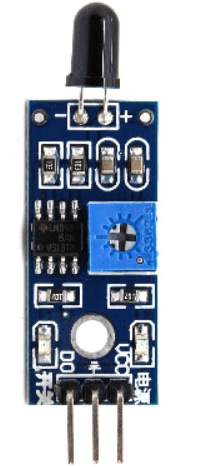
 Design with FLAME SENSOR MODULE in Cirkit Designer
Design with FLAME SENSOR MODULE in Cirkit DesignerIntroduction
The Flame Sensor Module is a device designed to detect the presence of flame or fire by sensing the infrared (IR) radiation emitted by flames. It is highly sensitive to IR wavelengths in the range of 760 nm to 1100 nm, making it ideal for fire detection systems. This module is widely used in safety applications, robotics, and industrial automation to detect and respond to fire hazards.
Explore Projects Built with FLAME SENSOR MODULE
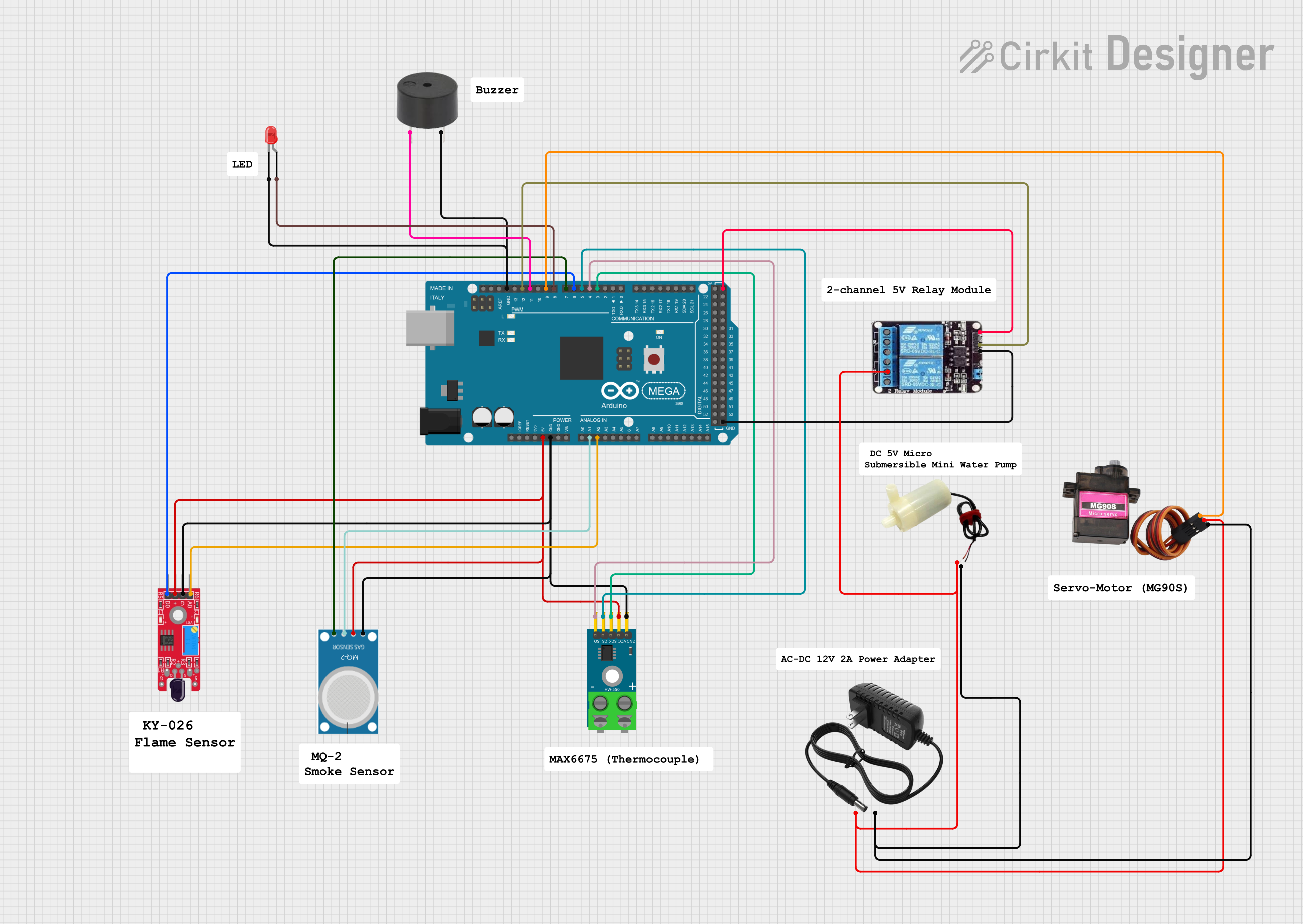
 Open Project in Cirkit Designer
Open Project in Cirkit Designer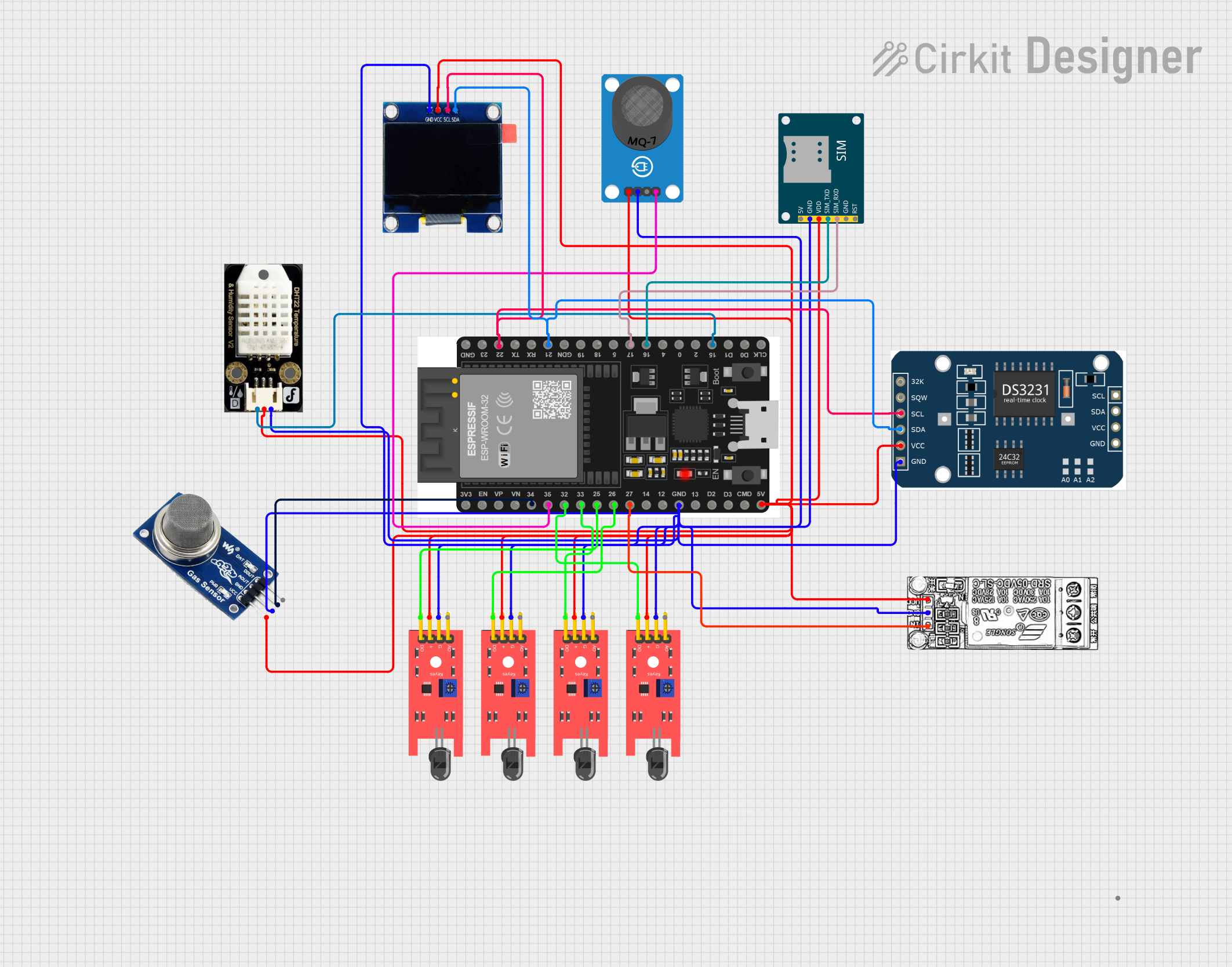
 Open Project in Cirkit Designer
Open Project in Cirkit Designer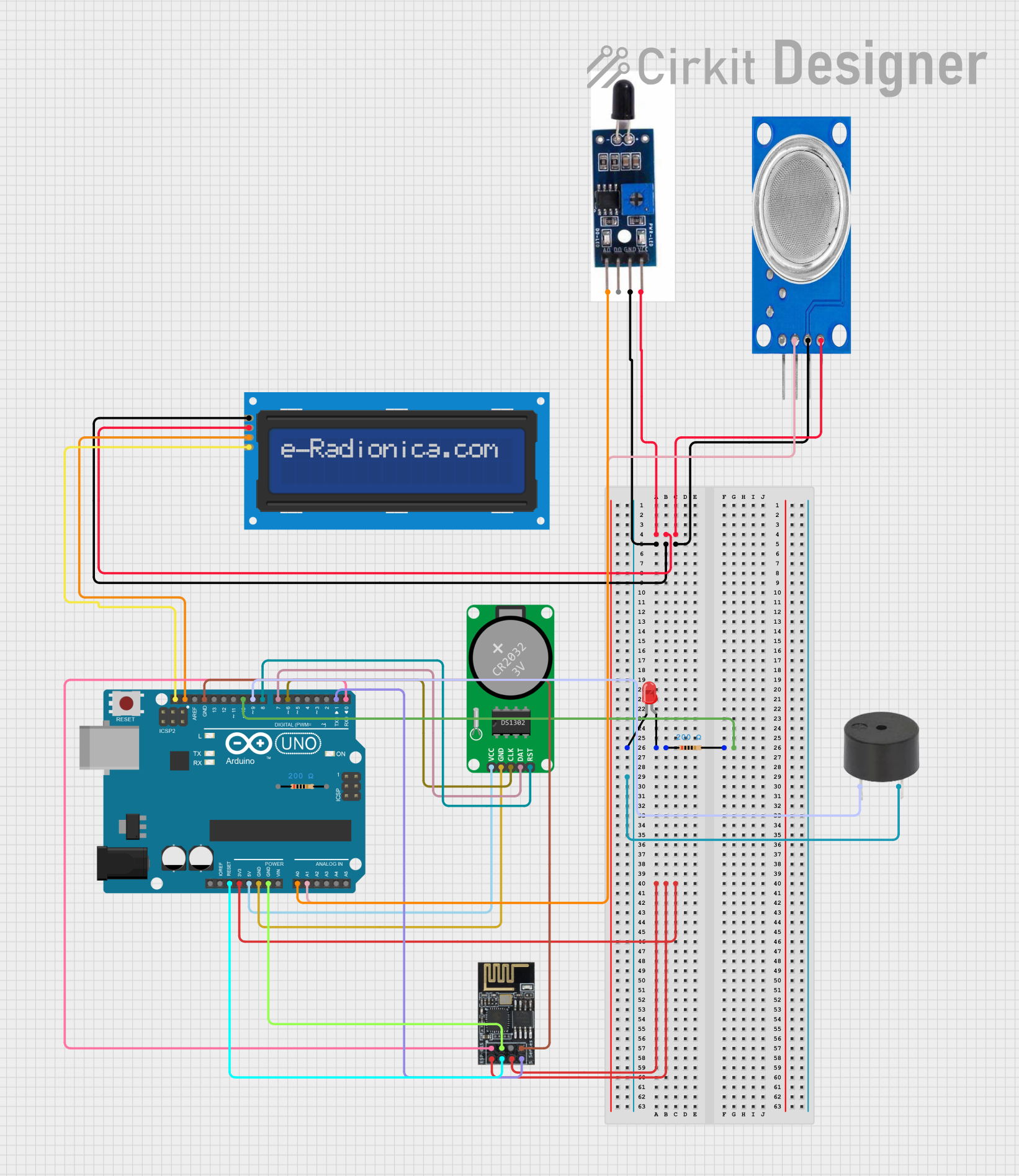
 Open Project in Cirkit Designer
Open Project in Cirkit Designer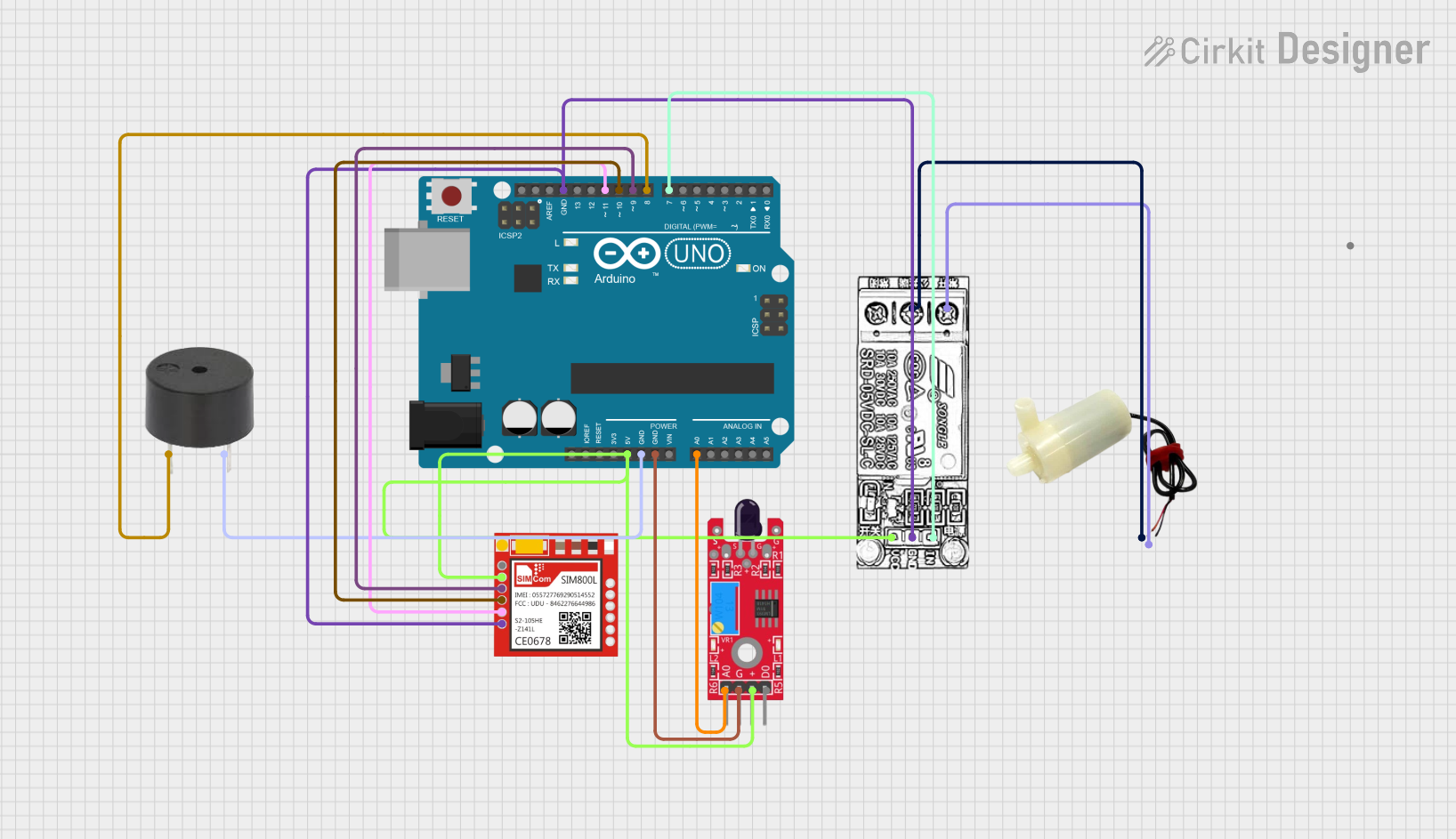
 Open Project in Cirkit Designer
Open Project in Cirkit DesignerExplore Projects Built with FLAME SENSOR MODULE

 Open Project in Cirkit Designer
Open Project in Cirkit Designer
 Open Project in Cirkit Designer
Open Project in Cirkit Designer
 Open Project in Cirkit Designer
Open Project in Cirkit Designer
 Open Project in Cirkit Designer
Open Project in Cirkit DesignerCommon Applications
- Fire detection and alarm systems
- Safety monitoring in industrial environments
- Flame detection in gas-powered appliances
- Robotics and automation for fire-fighting robots
- Early warning systems in residential and commercial buildings
Technical Specifications
The Flame Sensor Module is compact and easy to integrate into various projects. Below are its key technical details:
| Parameter | Specification |
|---|---|
| Operating Voltage | 3.3V to 5V |
| Detection Range | Up to 100 cm (depending on flame size) |
| Spectral Range | 760 nm to 1100 nm (IR wavelength) |
| Output Type | Digital (D0) and Analog (A0) |
| Operating Temperature | -25°C to 85°C |
| Dimensions | ~32mm x 14mm x 8mm |
Pin Configuration and Descriptions
The Flame Sensor Module typically has three or four pins, depending on the model. Below is the pinout description:
| Pin | Name | Description |
|---|---|---|
| 1 | VCC | Power supply pin. Connect to 3.3V or 5V. |
| 2 | GND | Ground pin. Connect to the ground of the circuit. |
| 3 | D0 | Digital output pin. Outputs HIGH (1) when flame is detected, LOW (0) otherwise. |
| 4 | A0 (optional) | Analog output pin. Provides an analog signal proportional to flame intensity. |
Usage Instructions
How to Use the Flame Sensor Module in a Circuit
- Power the Module: Connect the VCC pin to a 3.3V or 5V power source and the GND pin to the ground.
- Connect Outputs:
- For digital output, connect the D0 pin to a digital input pin on your microcontroller.
- For analog output (if available), connect the A0 pin to an analog input pin on your microcontroller.
- Adjust Sensitivity: Use the onboard potentiometer to adjust the sensitivity of the sensor. Turn clockwise to increase sensitivity and counterclockwise to decrease it.
- Test the Module: Place a flame (e.g., from a lighter or candle) within the detection range and observe the output.
Important Considerations and Best Practices
- Avoid exposing the sensor to direct sunlight or other strong IR sources, as this may cause false detections.
- Ensure the sensor is placed at an appropriate distance from the flame to avoid damage from heat.
- Use proper pull-up or pull-down resistors if required by your microcontroller.
- Regularly clean the sensor lens to maintain accuracy.
Example: Connecting to an Arduino UNO
Below is an example of how to connect and use the Flame Sensor Module with an Arduino UNO:
Circuit Connections
- VCC → 5V on Arduino
- GND → GND on Arduino
- D0 → Digital Pin 2 on Arduino
- (Optional) A0 → Analog Pin A0 on Arduino
Arduino Code
// Flame Sensor Module Example Code
// This code reads the digital and analog outputs of the flame sensor
// and prints the results to the Serial Monitor.
#define FLAME_SENSOR_DIGITAL 2 // Digital pin connected to D0
#define FLAME_SENSOR_ANALOG A0 // Analog pin connected to A0 (optional)
void setup() {
pinMode(FLAME_SENSOR_DIGITAL, INPUT); // Set digital pin as input
Serial.begin(9600); // Initialize serial communication
}
void loop() {
// Read digital output
int flameDetected = digitalRead(FLAME_SENSOR_DIGITAL);
// Read analog output (if connected)
int flameIntensity = analogRead(FLAME_SENSOR_ANALOG);
// Print results to Serial Monitor
if (flameDetected == HIGH) {
Serial.println("Flame detected!");
} else {
Serial.println("No flame detected.");
}
Serial.print("Flame Intensity (Analog): ");
Serial.println(flameIntensity);
delay(500); // Wait for 500ms before next reading
}
Troubleshooting and FAQs
Common Issues and Solutions
False Detections in Bright Environments:
- Cause: Strong IR sources like sunlight or incandescent bulbs.
- Solution: Shield the sensor from direct light or use it in controlled environments.
No Detection of Flame:
- Cause: Sensitivity is too low or the flame is out of range.
- Solution: Adjust the potentiometer to increase sensitivity and ensure the flame is within the detection range.
Unstable Output:
- Cause: Electrical noise or poor connections.
- Solution: Use proper decoupling capacitors and ensure secure connections.
FAQs
Q1: Can the Flame Sensor Module detect other heat sources?
A1: No, the module is specifically designed to detect IR radiation from flames. It may not respond to other heat sources like hot objects.
Q2: What is the maximum detection range?
A2: The detection range is up to 100 cm, but it depends on the size and intensity of the flame.
Q3: Can I use the module with a 3.3V microcontroller?
A3: Yes, the module supports both 3.3V and 5V operating voltages.
Q4: How do I clean the sensor?
A4: Use a soft, lint-free cloth to gently clean the sensor lens. Avoid using liquids or abrasive materials.
This concludes the documentation for the Flame Sensor Module.